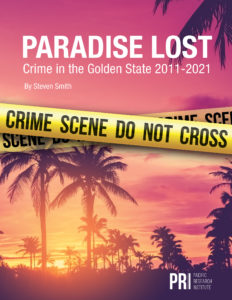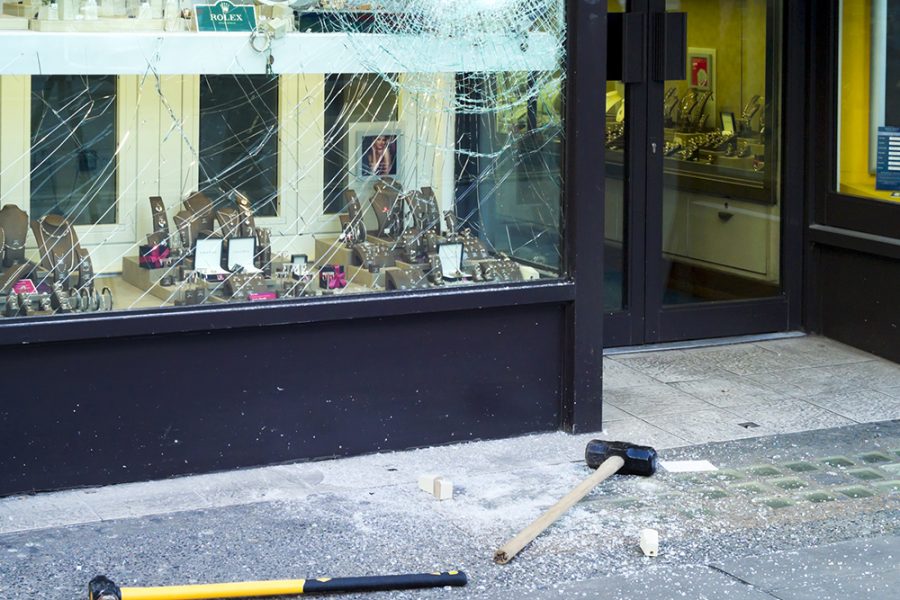On June 30th, California Attorney General Rob Bonta released his 2022 Crime in California report as well as several other mandated statistical reports covering hate crimes, juvenile justice, and firearms.

What the statistics tell us, like they have for the past three years, is that crime continues to rise. Violent crimes are up 6.1 percent and property crimes are up 6.2 percent over the 2021 figures. So disappointing are the results that the spin doctors in the Attorney General’s press office are reaching farther and farther back in time to find crime statistics high enough to claim crime has dropped. For example, despite three years of increasing property crime rates, the Attorney General’s Office reports that property crime in 2023 is lower than in 2017.
Only homicides and arson showed slight decreases from 2021 to 2022 yet from 2017-2022 the homicide rate rose 23.9 percent. In 2020 alone the number of homicide victims increased by 500 – the largest increase ever recorded in a single year.
Behind every percentile change are victims. Moreover, they are only the victims who decided to report. A large crime underreporting problem remains and consequently nearly all crime statistics are flawed.
Violent Crimes –
From 2021 to 2022 violent crime increased 6.1 percent. This means that in 2022, 193,019 people reported being the victim of a violent crime – up from 183,546 in 2021.
While homicides were down slightly from 2,361 in 2021 to 2,206 in 2022, the number of aggravated assaults were up from 123,122 to 128,798, an increase of 4.6 percent. The crimes of attempted murder, second degree murder, and manslaughter all lie within the aggravated assault category which indicates that murderous criminal intent runs significantly higher than homicide statistics indicate. A more appropriate title might be murder victims who didn’t die. The success of California’s trauma centers in treating gun-shot victims is all that is standing between us and a murderous epidemic.
Robberies also increased 43,628 to 47,669, an increase of 9.2 percent. Sexual assaults increased from 14,435 to 14,346, an increase of .6 percent.


Property Crime –
Reported property crimes are up from 857,599 to 902,977, an increase of 5.29 percent. Burglaries, vehicle thefts, and larceny are all up. Arsons dropped from 11,138 to 9,841. Of note is the increase in total loss value resulting from theft which is up 44.82 percent over five years. The total five-year dollar loss from 2018-2022 is $16.4 billion dollars. The National Crime Victimization Survey (NCVS) does not issue property crime statistics although a recent study of crime victimization conducted by Stanford University and the San Francisco Chronicle indicates that 45% of surveyed San Francisco residents have been the victim of a property crime. San Francisco may not be the best example for the rest of the State but it does reaffirm the underreporting phenomena is not limited to violent crimes.

Crime Clearances (Cases resolved by arrest) and Police Staffing –
Public safety resignations and retirements coupled with a drop in recruiting continue to have an effect on law enforcement’s ability to solve crimes. Violent crime clearances improved slightly from 2021 while property crime clearances declined -– indicating police agencies are focusing their declining resources on violent crime. The overall clearance percentage for violent crime in 2022 was 41 percent while the property crime clearance rate was just 7.2 percent. In 2018 those clearance percentages were 45.1 percent and 10.5 percent.
For example: there were 2,206 murders in 2022 and 1,294 were cleared (although it’s unclear if murders tolled in 2022 were cleared in 2022 or are carryover clearances from previous years).
Police staffing has declined from a high of 154,352 in 2019 to 147,659 in 2022 – a drop of 4.4 percent.
A recent study by New York University found that police staffing relates to the ability to solve crime and further shows that increased policing saves lives. The research shows that each police officer can prevent .1 homicides and that the impact in Black communities can be as much as double that in white communities. To put it differently, police hiring saves more Black lives in per capita terms.

Parolees at Large and Recidivism –
As of December 2022, there were 6,987 parolees at large in California and a recent three-year study of parolees released in 2017/18 indicates that 68.4 percent of parolees are rearrested by year three of their release from prison.
Prop 57 provided incentives for early release that were contingent not just on following rules, but also on participating in rehabilitative and educational programs. However, two-thirds of released prisoners re-offend. It is fair to say that the current policy of dispensing “good time” credits to prison inmates may not be living up to its promise of reducing incarceration, reducing crime, and saving money.
California has responded by devising a way to improve recidivism and re-arrest statistics. In 2020, the Governor signed SB 118 which reduces the term of parole from three years to two years for parolees who served a determinate sentence. For lifers, the term will remain three years. SB 118 will guarantee that recidivism figures will go down even while crime rates increase, thus creating the illusion of rehabilitative success and perpetuating the myth that Prop 57 – “The Public Safety and Rehabilitation Act of 2016” – is a success.
Conclusion –
When the CA Attorney General’s office or soft-on-crime supporting politicians point to any crime data decreases as good news, it is quickly extinguished by near static homicide numbers and an increase in nearly every other category of violent and property crime – especially the 9,473 aggravated assault victims.
The political groundwork for these increasing rates actually began over ten years ago and was identified in the Pacific Research Institute study Paradise Lost: Crime in the Golden State 2011-2021.
The question now is will the Legislature re-evaluate its priorities and shift the focus from decriminalization and de-carceration to crime prevention? Millions of lives depend on it.
Steve Smith is a senior fellow in urban studies at the Pacific Research Institute, and is the author of the new PRI study on California’s growing crime trend, “Paradise Lost.”


